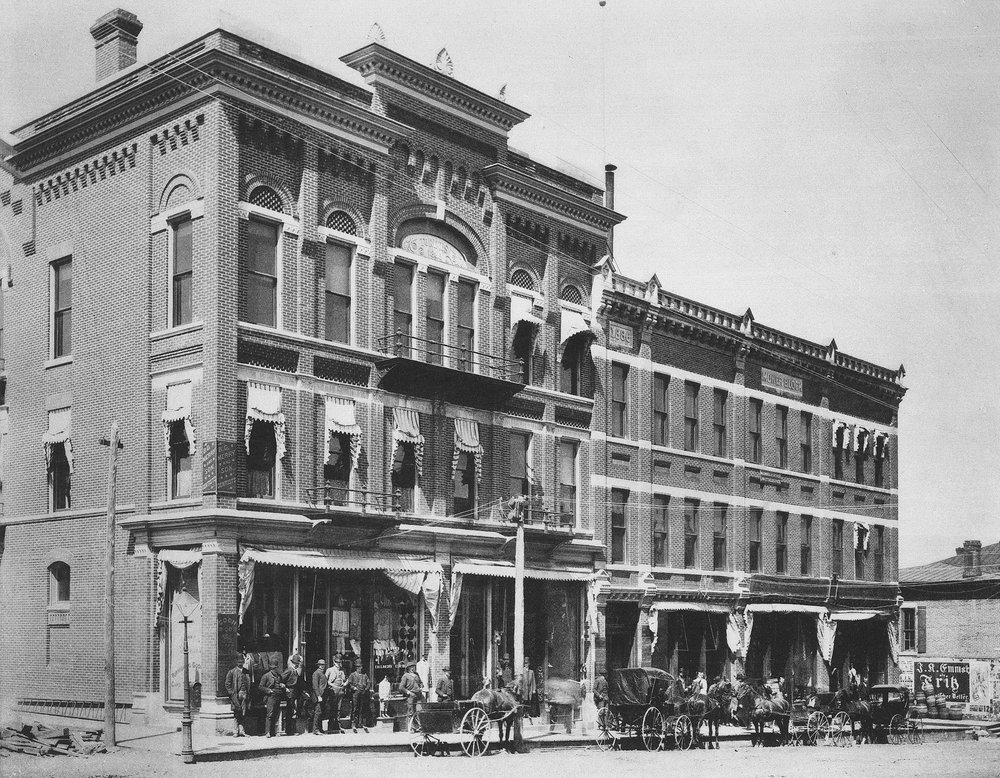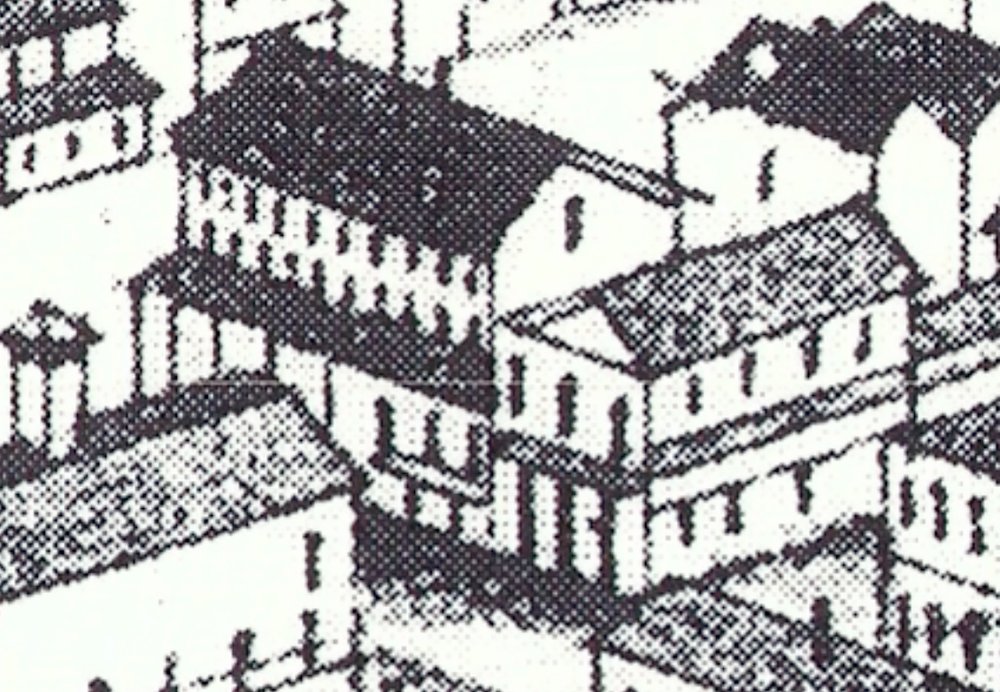Mower & Torinus Blocks
When Stillwater was still in its infancy there were several people who came forward as leaders of the community. One such person lived a few miles north of the community on the banks of the St. Croix River in the small but growing town of Arcola.
John Mower and his brother Martin were in business with their own lumber mill in Arcola, which they built in 1847. They were also involved with the development of Stillwater and constructed one of the first large business blocks in town in the late 1850s.
The first Mower block was constructed of wood in 1857-58. In the St. Croix Union of November 14, 1856, the paper states that the building “is 50 X 90 feet – two stories high – on the southwest corner of Union Square – fronting Chestnut and Second streets.” Two weeks later the paper corrected itself when it declared that the building was not to be two stories, but three stories in height.
Philip Mueller, who walked to Stillwater in 1856 from St. Paul with no money, was looking for work. “When I got to Stillwater,” Mueller remembered later, “I saw some dings going on where the Mower block was, and I walked up to Abraham Green, who was erecting that part and asked him for work. He gave me something to do and I went at it.” Mueller remembered that the building started construction in March, but “in April a wind blew it all to pieces and I helped to build it again and got some more bread and butter. The main part of the building was built in 1857 by John Mower.”
The wooden Mower block was used, in part, as a public school, the city hall and the city jail. This building caught fire on Monday evening May 24, 1886. The flames started from the rear of the building and were discovered by Ed Conhaim, the proprietor of a second hand furniture store located in the building. The flames spread quickly and the building was soon engulfed in flames. The concern was that the fire would spread to other buildings nearby. The fire was soon under control, and by the next morning, all that was left was ashes.
Soon the debris was cleared away and the owners of the building, Mrs. Mower and her three daughters, met and decided to rebuild. John Green was hired to design and construct the new three-story brick structure. The style, said the Stillwater Messenger of June 12, 1886 was to be “Elizabethan” and Mr. Green said that the “building will beat anything in the city.” The Gazette of September 13, 1886 agreed, saying, “the new Mower block presents a handsome appearance.”
Nearly at the same time, Mrs. Mower’s daughter, Mrs. Helen Torinus, built a business block next door, to be known as the Torinus block. These buildings would be joined together on the second floor.
Over time, the ownership issue of the Mower and Torinus blocks became confusing. As the owners passed away, their next of kin would get partial ownership and by the middle 1930s, there were a dozen or so with some ownership in the buildings. In late 1936 and early 1937 Lyman Sutton and Sheriff Thomas H. Maher, cleared up the ownership question when the two purchased the buildings. But in less than thirty years, the buildings would be gone.
In August 1964, Washington Federal Savings and Loan was growing quickly. At the start of 1957, the bank had assets totaling $4.2 million. Just seven years later they had assets totaling $11.5 million. During the same time, the office staff tripled. With all of this, they needed more space. Bank president George C. Kern announced that the Washington Federal Savings and Loan had purchased the Mower and Torinus blocks and were going to raze the buildings and construct a “handsome colonial type building.”
In the bitter cold days of February 1965, the Mower and Torinus blocks were demolished. Even as the buildings were coming down, a newspaper reporter wrote that the history of the buildings was a “little hazy.”
The Washington Federal Savings and Loan building that replaced the majestic Mower-Torinus block was demolished less than sixty years after its construction. The Miller Apartments opened on the site in 2023.
—Brent Peterson
Brent Peterson is Executive Director of the Washington County Historical Society


